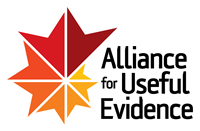Is it Time to Ditch the “Deck”?
Is it Time to Ditch the “Deck”?
by John Burrett, haiku analytics inc
In the course of presenting to various professional audiences over the past several years on effective ways to represent and communicate data, I have often heard the following: “That’s really interesting, and I’d love to try presenting that way, but we have to use decks”. Aside from this being disappointing because I appear to have wasted my breath, I am left intrigued with the fact that the key method of briefing senior managers in the government of Canada and similar organizations is one that is known to be just about the most ineffective method possible.
What is a “deck”?
A briefing deck, as in, “where’s the deck on this?”, is a series of PowerPoint slides printed on paper and presented in a stack. A typical deck may have more than 50 pages, each page containing several main “bullet” points accompanied by a hierarchy of subordinate bullets. Decks are required by senior management as the centrepiece of briefings on policy issues or on findings by researchers and program evaluators. The briefing process involves, at best, staff presenting the points on each sheet, sequentially, answering questions as required.
Why is this a depressing fact?
As I have already alleged, the printed slide deck is highly ineffective as a means of communicating complex issues in order to make informed decisions. The implication of this is that the quality of public policy decision-making is almost certainly affected. Is there evidence for this?
In January 2003, the space shuttle Columbia was damaged during launch when a piece of foam insulation broke from the fuel tank and impacted one of the craft’s wings. Over the next two weeks NASA investigated the risk that this might pose to the mission, finally concluding that the danger was not significant. As a result, no attempts were made to visually inspect the damage or effect any remedy. Columbia burned up on re-entry, killing all on board. How could this have happened? It seems PowerPoint decks played their part.
Edward R. Tufte, a leader in methods for communicating data and ideas, used the Columbia disaster as a central example in “The Cognitive Style of PowerPoint: Pitching Out Corrupts Within”.[1] Tufte used evidence from the Columbia Accident Investigation Board (CAIB) and the subsequent Return to Flight Task Group, case studies of NASA briefing decks related to Columbia, observations by physicist Richard Feynman on similar processes related to the Challenger accident in 1986 and Tufte’s own work as a consultant to NASA on technical presentations. Tufte’s analysis was taken up by the Columbia Accident Investigation Board, who in their report, regarding the use of PowerPoint briefing decks, said:[2]
“As information gets passed up an organization hierarchy, from people who do analysis to mid-level managers to high-level leadership, key explanations and supporting information are filtered out. In this context, it is easy to understand how a senior manager might read this power point slide (referring to a key briefing slide assessing the risk to Columbia) and not realize that it addresses a life-threatening situation”.
The report also concluded that:
“The Board views the endemic use of PowerPoint briefing slides instead of technical papers as an illustration of the problematic methods of communication at NASA.”
If Tufte, in response to NASA asking him, said that the reliance on PowerPoint decks for briefings and discussions was a significant factor in NASA failing to avert the Columbia disaster, with the agreement of many others who were involved, then I am inclined to believe that decks pose a problem for other briefing tasks too.
Tufte’s analysis centres on the way that PowerPoint, in the preparation of briefing decks, forces information into “bites” sized to fit the format, rather than the information. This disrupts the audience’s ability to see facts and figures in their proper context. The software furthermore creates a hierarchical structure of titles, main bullets and subordinate bullets, typically indented farther and with decreasing font sizes. This leads to a tendency for audiences to discount the subordinate bullets and their message, and for presenters to filter more and more of these subordinate points out as the deck heads farther up the chain of command. As Tufte puts it:[3]
“In their report, the CAIB found that the distinctive cognitive style of PowerPoint interacted with the biases and hierarchical filtering of the bureaucracy during the crucial period when the spacecraft was damaged but still functioning”.
Quoting the (downright harrowing) report of the CAIB again:[4]
“The Mission Management Team Chair’s position in the hierarchy governed what information she would or would not receive. Information was lost as it travelled up the hierarchy.”
Regarding Boeing’s reports during this period, the CAIB said:
“The choice of headings, arrangements of information and size of bullets on the key chart served to highlight what management already believed. The uncertainties and assumptions that signalled danger dropped out of the information chain when the Mission Evaluation Room manager condensed the Debris Assessment Team’s formal presentation to an informal verbal brief at the Mission Management Team Meeting.”
Does any of that sound familiar? Of course it does. This must happen every day, albeit usually less tragically, all over any centre of government you care to name.
Are there alternatives?
Experts such as Tufte, Nancy Duarte and Stephen Few have contributed a great deal of practical research and knowledge to the practice of presentation of factual and empirical information. Their prescriptions include use of proper technical papers with summaries along with presentations designed to present the critical facts and recommendations up-front, accompanied by supporting/conditioning information in effective formats, including the visually-focused analysis and display of quantitative information. All of this information is easily accessed and understood, and there would seem to be opportunities to explore alternatives, given the amount of briefing activity that takes place daily on non-critical matters.
So, why do government departments and similar agencies insist on using decks?
That is a good question. Is it because upper management demands the deck format, believing it to be an effective way to be briefed in little time? Are the writers of the decks complicit, writing what they know to be ineffective briefings, or are they too under the impression that this works?
I don’t know the answers to these questions, but I do know that when people tell me that they write slide briefing decks, they are not bragging. I think it is time to try to do better.
[1] Edward R. Tufte, 2006, 2nd ed. 2011, Graphics Press LLC, Connecticut, pg. 13.
[2] Columbia Accident Investigation Board, Report, vol. 1 (August 2003), pg. 191.
[3] Tufte, op. cit. pg. 12.
[4] CAIB, op. cit. pg. 201.
John Burrett is an SIAA member in Ottawa, Canada. He focuses on ways to help clients use and understand their data, especially when it comes to impact and value.





